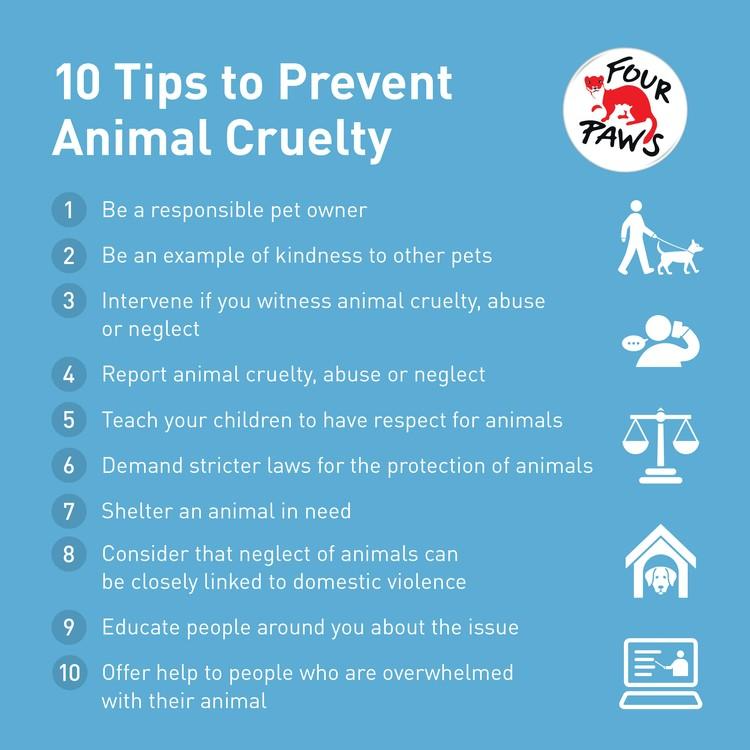Animal cruelty is a pervasive issue that plagues modern society, manifesting in various forms, including neglect, exploitation, and outright violence against animals. The question we might explore is this: What are some possible solutions to animal cruelty in our contemporary landscape? Tackling this multifaceted problem requires a comprehensive approach that encompasses legislative advocacy, public education, and community engagement. The challenge lies in effectively integrating these solutions into our daily lives and societal frameworks.
One of the most significant avenues for combating animal cruelty is through legislative reform. Governments have the power to enact and enforce laws that provide protection for animals. Strengthening existing animal welfare laws and introducing stricter penalties for violators can serve as a deterrent against abuse and neglect. Often, the legal frameworks that govern animal rights are antiquated, failing to address the complexities of modern animal treatment and exploitation.
Consider the challenges of enforcing these laws. Many jurisdictions lack adequate resources for law enforcement agencies to investigate and prosecute cases of animal cruelty. This deficit leads to a murky enforcement landscape that often protects offenders and leaves victims vulnerable. Therefore, a concerted effort must be made to allocate sufficient funding for animal control, provide training on animal welfare issues for law enforcement, and enhance collaboration with animal welfare organizations.
Public awareness plays a vital role in mitigating animal cruelty. Education can transform societal norms and behaviors. Implementing community education programs that emphasize empathy, compassion, and respect for all living beings is crucial. Schools should incorporate animal welfare topics into their curriculums, fostering a generation that values and protects animals. Imagine a world where every child grows up with an understanding of the emotional and physical needs of animals. Wouldn’t that create a more caring society?
However, educating the public comes with its own set of challenges. How do we effectively reach individuals who may be indifferent or even hostile to the notion of animal welfare? Crafting relatable, engaging messages that resonate with diverse audiences is essential. Utilizing social media platforms, documentaries, and interactive workshops can provide innovative ways to disseminate information and inspire change. The challenge remains in ensuring these narratives compel individuals to act rather than remain passive observers.
Another solution to combat animal cruelty lies in promoting ethical consumerism. Consumers wield significant power through their purchasing choices. By supporting companies that prioritize humane treatment of animals and shunning those that engage in cruel practices, individuals can drive market change. This movement towards ethical consumerism involves understanding the origins of products and the practices behind them, from food to fashion.
Yet, the challenge emerges in the complexity of supply chains. Many consumers are unaware of how deeply entrenched animal cruelty can be within the products they buy. Labeling initiatives that clearly mark humane and cruelty-free products can empower consumers to make informed choices. Furthermore, advocacy for transparent supply chains will heighten corporate accountability. Nevertheless, transforming consumer habits requires patience and persistent effort.
Corporate responsibility extends beyond consumer choices. Businesses must recognize their role in mitigating animal suffering. Companies involved in agriculture, cosmetics, and entertainment, among others, should reevaluate their practices. Transitioning to cruelty-free methods and adopting animal welfare standards can drastically reduce instances of abuse.
The challenge lies in balancing profitability with ethical practices. Many businesses fear that adopting more humane methods will drive up costs, affecting their bottom line and market competitiveness. Thus, it is essential to advocate for economic models that encourage sustainable sourcing and humane practices, demonstrating that ethical treatment can coexist with commercial success. Initiatives such as tax incentives for humane businesses could also encourage corporate changes.
Community involvement is a pivotal solution in combating animal cruelty at ground level. Grassroot movements can thrive in local neighborhoods, addressing specific needs related to animal welfare. Local shelters and rescue organizations often rely on volunteers and donations to operate effectively. Collaborative efforts can foster an environment where animals are cared for and well-treated.
However, community outreach faces several hurdles. Engaging the community may prove difficult, especially when individuals feel disconnected from the issues at hand. Creating engaging events, such as adoption drives or educational workshops on responsible pet ownership, can serve as effective entry points. The challenge is to ignite genuine interest and concern, compelling community members to take action.
Finally, leveraging technology offers a cutting-edge approach to fighting animal cruelty. Innovative applications can enhance public reporting of cruelty cases, allowing individuals to anonymously document and report incidents, thus streamlining responses from authorities. Social media campaigns can spread awareness rapidly and mobilize communities to advocate for change. Yet, the challenge exists in ensuring that digital efforts translate into tangible actions.
In conclusion, the fight against animal cruelty in modern society is a complex yet essential undertaking. Solutions ranging from legislative reform and public education to ethical consumerism and community engagement can significantly contribute to alleviating this pressing issue. While challenges abound, they should not deter us from striving for a more compassionate world. The collective responsibility rests upon us to foster systemic changes, ensuring that every creature has the right to live free from suffering and harm.








